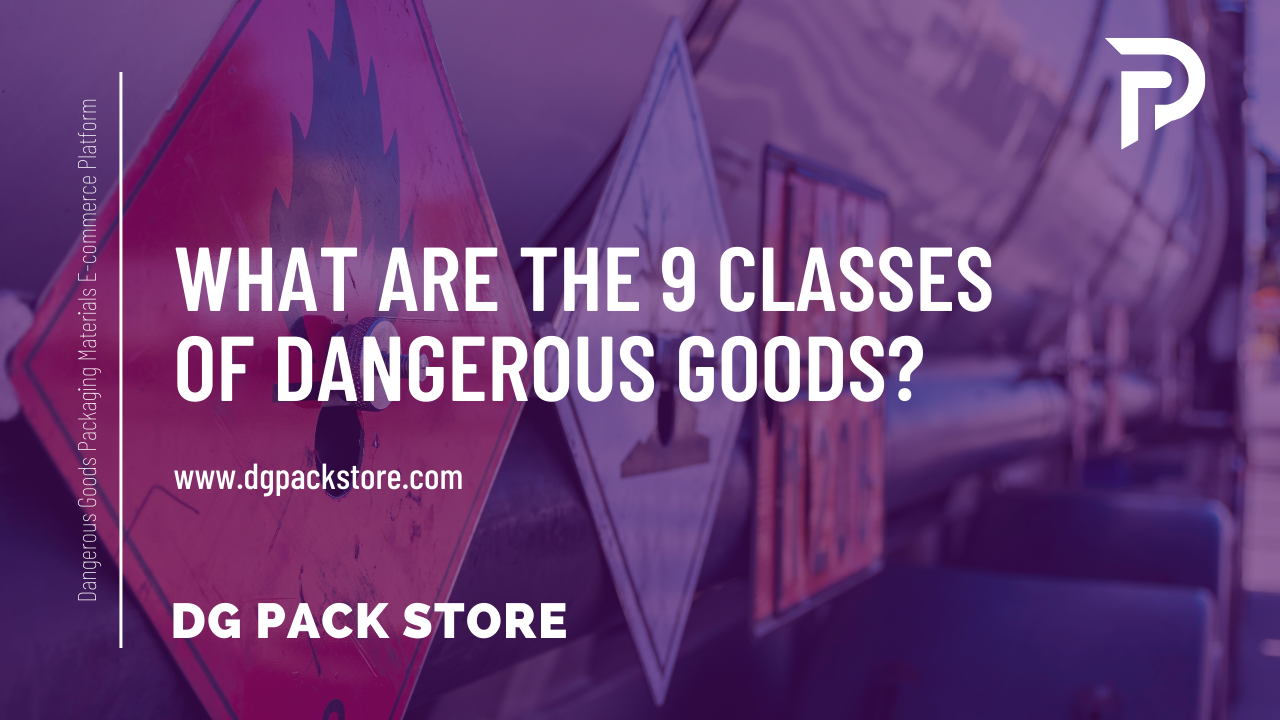What are the 9 classes of Dangerous Goods?
21-12-2022
19:28

Hazardous materials, also known as hazardous substances or dangerous goods, are substances that pose a significant risk to human health, safety, and the environment. Various national and international agencies regulate these materials to ensure their safe transportation, handling, and disposal.
One way to classify hazardous materials is by their physical and chemical properties. There are nine classes of hazardous materials, as defined by the United Nations (UN) and the International Civil Aviation Organization (ICAO). These classes are:
Class 1 - Explosives: Substances that are capable of producing an explosion or fire when exposed to heat, friction, impact, or shock. Examples include fireworks, dynamite, and blasting agents.
Class 2 - Gases: Substances in a gaseous state at standard temperature and pressure. Examples include propane, helium, and chlorine.
Class 3 - Flammable liquids: Liquids that are easily ignited and can burn rapidly. Examples include gasoline, ethanol, and acetone.
Class 4 - Flammable solids: Solids that are easily ignited and can burn rapidly. Examples include magnesium, sulfur, and phosphorus.
Class 5 - Oxidizing substances: Substances that can produce oxygen, potentially leading to the ignition of other materials. Examples include bleach, hydrogen peroxide, and ammonium nitrate.
Class 6 -Toxic and infectious substances: Substances that are poisonous or capable of causing illness or disease. Examples include cyanide, arsenic, and some pesticides.
Class 7- Radioactive materials: Substances that emit ionizing radiation, which can be harmful to living tissue and the environment. Examples include uranium, plutonium, and radium.
Class 8 - Corrosives: Substances that can damage or destroy living tissue, metal, or other materials on contact. Examples include acids, bases, and some cleaning agents.
Class 9 - Miscellaneous dangerous goods: Substances that do not fit into any of the above categories but are still considered hazardous. Examples include dry ice, asbestos, and lithium batteries.
It is important to identify, label properly, and handle hazardous materials to prevent accidents and protect public health and the environment. If you work with hazardous materials, make sure to follow all relevant regulations and guidelines to ensure the safe handling and transportation of these substances.
You can find UN-certified boxes and triple transport systems, dangerous goods labels, and ice accumulators required for the packaging and transportation of dangerous goods on our e-commerce site. www.dgpackstore.com/en
You can find UN-certified boxes and triple transport systems, dangerous goods labels, and ice accumulators required for the packaging and transportation of dangerous goods on our e-commerce site. www.dgpackstore.com/en
